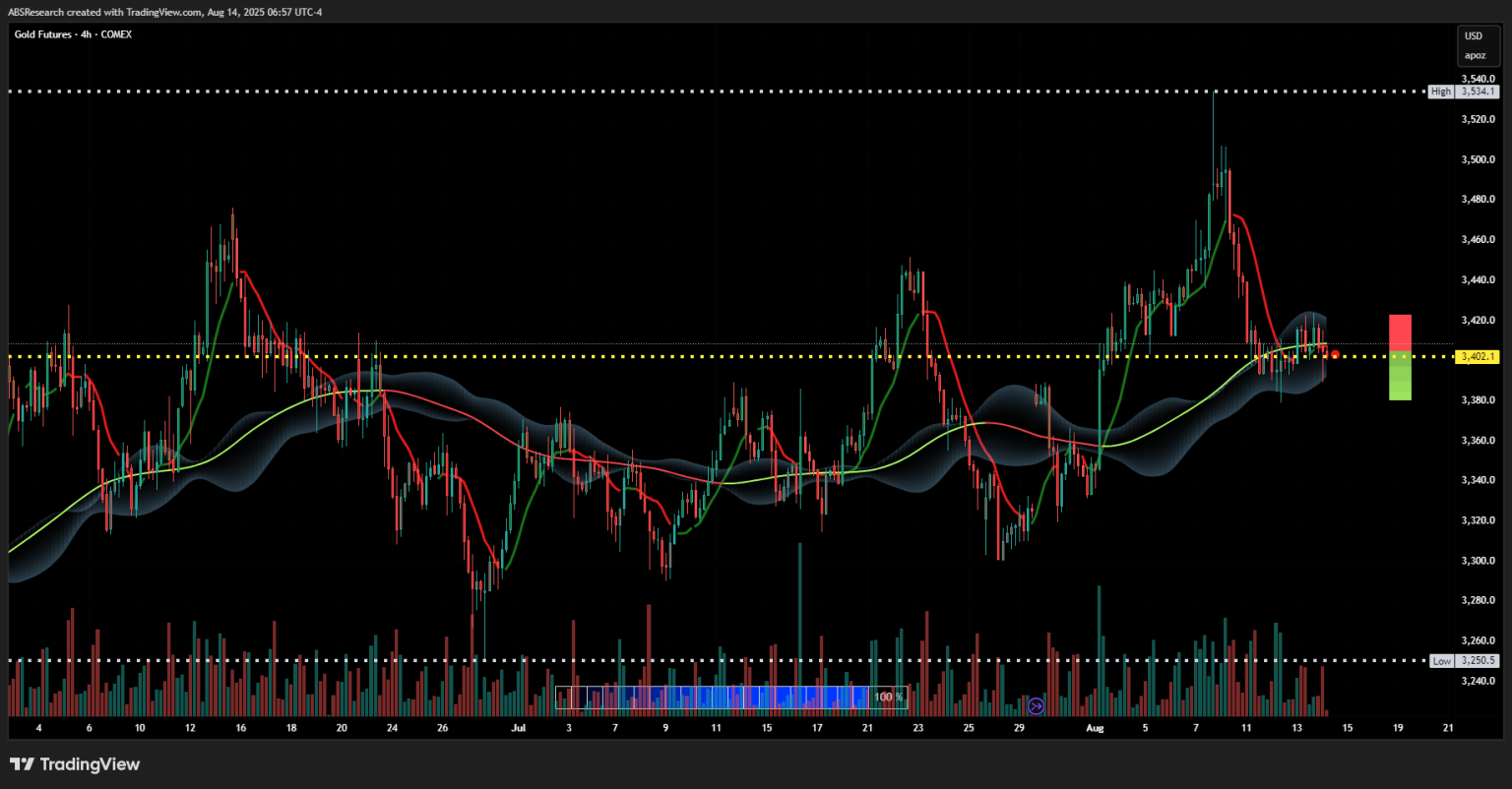Yesterday’s trading session delivered another strong performance for U.S. equities as investors maintained their optimistic stance following Tuesday’s inflation report. The market’s enthusiasm for potential Federal Reserve rate cuts continues to drive major indices to new heights, with the S&P 500 closing above 6,400 for the second consecutive day.
S&P 500 Performance: New Milestones Reached
The S&P 500 added 0.32% to close at 6,466.58, marking its second straight record close and its 16th record high of the year. The index has now firmly established itself above the psychologically important 6,400 level, demonstrating remarkable resilience despite earlier year volatility that saw it briefly touch bear market territory in April.
The broad market rally reflected widespread confidence, with market participants pricing in a near 100% probability of a Federal Reserve rate cut at the September meeting. This optimism stems from Tuesday’s Consumer Price Index data, which showed headline inflation at 2.7% year-over-year, matching June’s reading but coming in softer than economists’ expectations of 2.8%.
Sector Performance: Technology and Basic Materials Lead
Yesterday’s sector performance showed notable strength in growth-oriented areas of the market:
Winners:
- Basic Materials surged 3.56%, leading all sectors
- Technology gained 3.37%, with semiconductor stocks showing particular strength
- Consumer Discretionary continued its recent momentum as rate-sensitive stocks rallied
Laggards:
- Energy declined 0.89%, weighed down by falling oil prices
- Healthcare dropped 0.61%, continuing its underperformance for the year
The technology sector’s strength was particularly notable, with AMD jumping 5.4% and Apple advancing 1.6%. The small-cap Russell 2000 Index soared nearly 3% on the day, demonstrating how rate-cut optimism particularly benefits smaller, more interest-rate-sensitive companies.
Gold: Safe Haven Remains Elevated
Gold prices showed resilience yesterday, trading at approximately $3,358 per ounce as of 9:15 AM Eastern Time, representing a $10 uptick from the previous day and a remarkable $911 gain over the past year. The precious metal has climbed over 25% since the beginning of 2025, driven by persistent inflation concerns and economic uncertainty.
The sustained strength in gold prices reflects investors’ ongoing appetite for safe-haven assets, even as equity markets rally. Market participants appear to be hedging their bets, maintaining gold positions as insurance against potential market volatility or unexpected inflation developments.
U.S. 10-Year Treasury Yield: Modest Movement
The 10-year Treasury yield edged up slightly to 4.30% on August 12, marking a minimal 0.01 percentage point increase from the previous session. Despite the modest daily move, yields have fallen 0.14 percentage points over the past month, though they remain 0.45 points higher than a year ago.
The relatively stable yield environment suggests bond investors are taking a measured view of the Fed’s likely policy path. With yields hovering in the 4.2% to 4.6% range for much of the recent period, the bond market appears to be finding equilibrium between growth expectations and inflation concerns.
Bond Market: Searching for Direction
The broader bond market continues to navigate a complex environment as investors weigh competing forces. Municipal bonds saw steady demand, with new issuance of $10 billion scheduled for the week. Investment-grade corporate bonds maintained their appeal, though spreads remain tight by historical standards.
High-yield bonds face particular scrutiny, with yields around 7% offering attractive income but limited room for further spread compression. Market strategists suggest that while bonds may outperform cash in 2025, significant rallies would require more aggressive Fed rate cuts than currently anticipated.
Oil: Continuing Weakness
WTI crude oil fell to $62.84 per barrel, down 0.52% for the day and reflecting a 6.18% decline over the past month. The 18.37% year-over-year drop underscores the significant headwinds facing the energy sector, including concerns about global demand and potential oversupply.
The Energy Information Administration forecasts Brent crude prices could fall to $58 per barrel in the fourth quarter of 2025, driven by expectations of increased production from OPEC+ members and persistent global inventory builds. This weakness in oil prices provides some relief on the inflation front but presents challenges for energy sector earnings.
Looking Ahead: Key Considerations for Investors
As we move forward, several factors warrant close attention:
- Fed Policy Path: With markets fully pricing in a September rate cut, any deviation from expectations could trigger volatility
- Inflation Dynamics: While headline inflation has moderated, core inflation at 3.1% remains above the Fed’s target, suggesting the central bank may proceed cautiously
- Sector Rotation: The dramatic shifts in sector leadership throughout 2025 highlight the importance of maintaining diversified portfolios
- Global Factors: Trade policies and international economic developments continue to influence market sentiment
- Technical Levels: With major indices at or near all-time highs, technical resistance levels become increasingly important
Investment Implications
Yesterday’s market action reinforces several key themes for investors:
- Rate-Sensitive Assets: Small-caps and growth stocks continue to benefit from rate-cut expectations
- Quality Matters: In a market priced for perfection, focusing on quality companies with strong fundamentals becomes crucial
- Diversification: The volatility in sector leadership underscores the importance of maintaining balanced exposures
- Income Opportunities: With bond yields still elevated by recent historical standards, fixed-income allocations merit consideration
Conclusion
The market’s continued strength reflects a delicate balance between optimism about Fed policy accommodation and lingering concerns about economic growth and inflation. While the path of least resistance appears higher in the near term, investors should remain mindful of the various crosscurrents that could impact markets in the months ahead.
As we navigate this environment, maintaining discipline, diversification, and a focus on long-term objectives remains paramount. The current market offers opportunities across asset classes, but selectivity and risk management will likely prove increasingly important as we move through the remainder of 2025.



